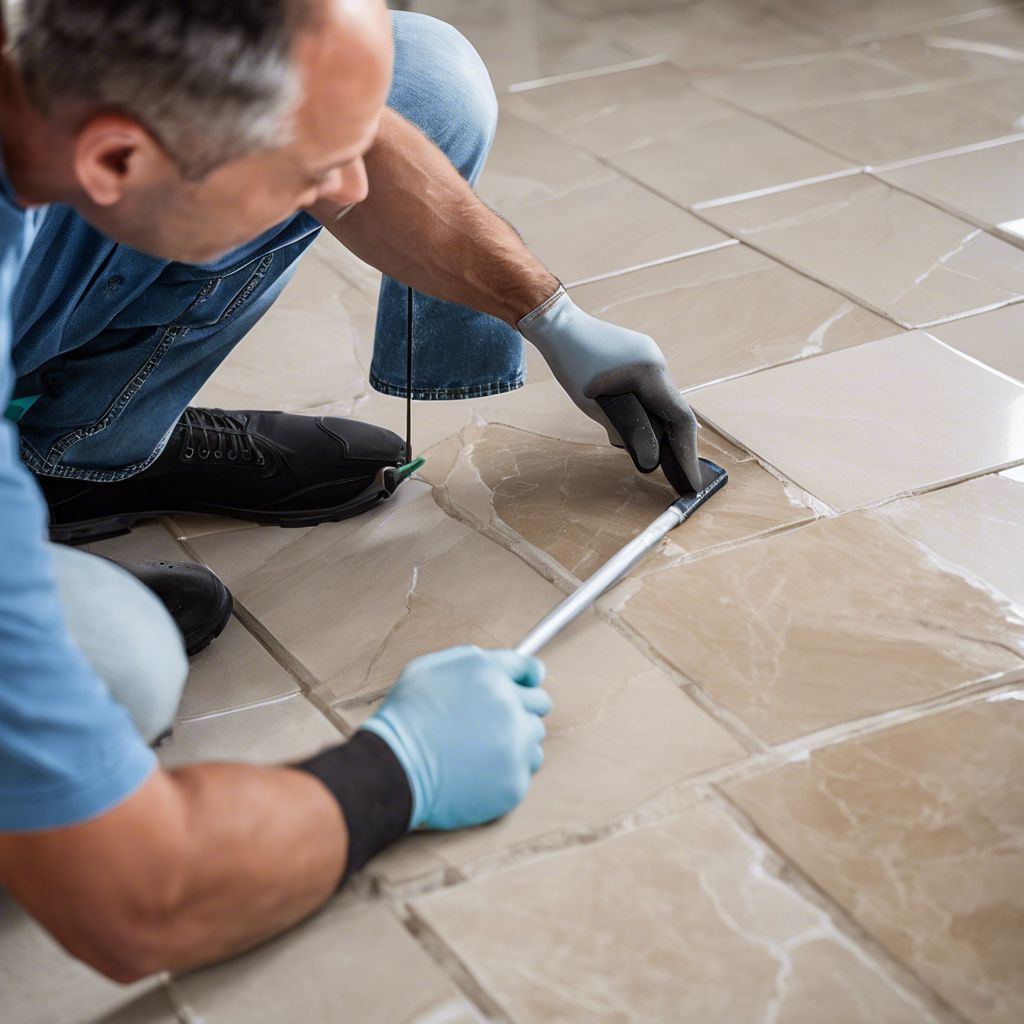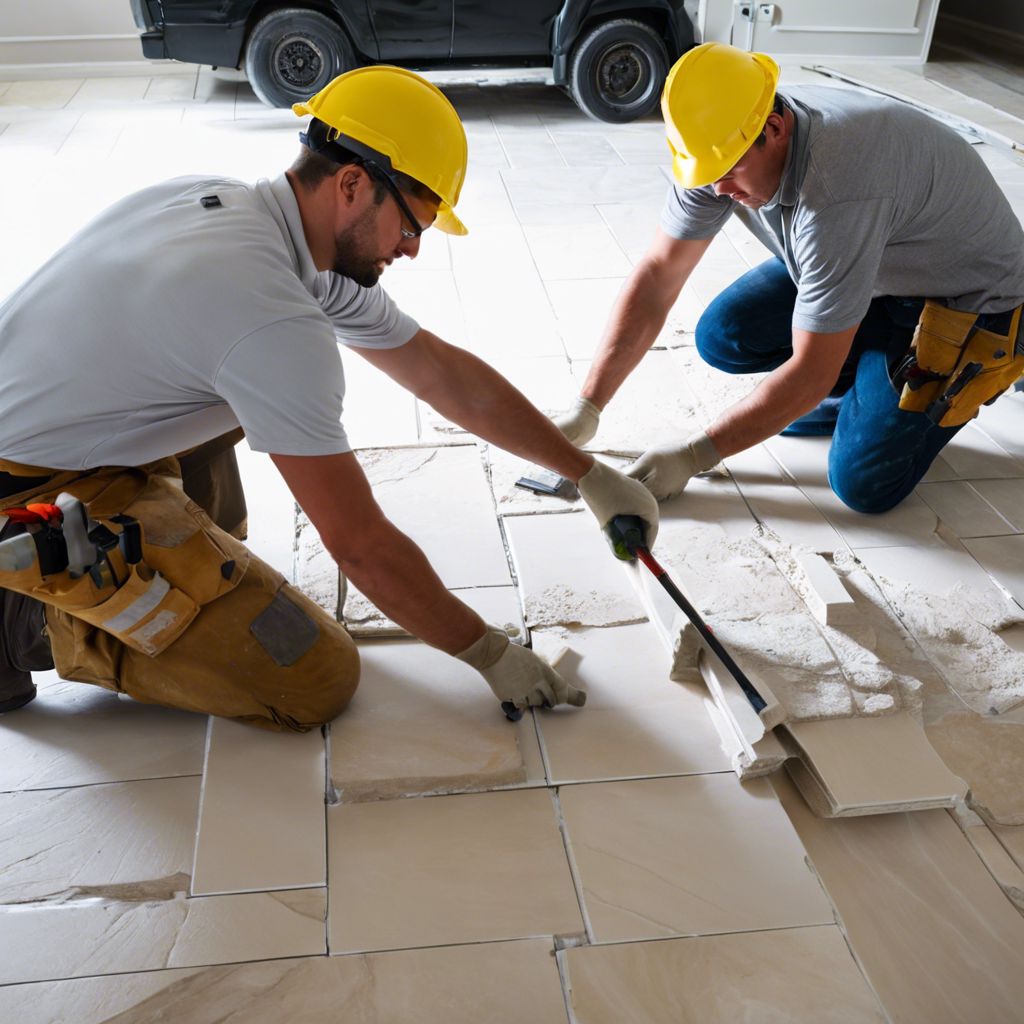
Key Takeaways
- Refinishing limestone flooring typically costs between $3 and $7 per square foot, while remodeling can range from $10 to $30 per square foot.
- Refinishing takes about 1-2 days, whereas remodeling can take up to a week or more depending on the size of the area.
- Refinishing can restore the original beauty of your limestone tiles, but it won’t fix underlying structural issues.
- Remodeling allows you to completely change the look of your flooring and address any foundational problems, but is less environmentally friendly.
- Choose refinishing for minor surface damage and remodeling for extensive wear and tear or when a new look is desired.
Refinishing vs Remodeling Limestone Tile Flooring: Which is Better?
Choosing between refinishing and remodeling your limestone tile flooring can be a daunting decision. Each option has its own set of advantages and limitations, making it essential to understand which is better suited for your needs. Whether you’re dealing with minor scratches or contemplating a complete overhaul, this guide will help you make an informed choice.
Refinishing vs Remodeling: Snap Overview
Refinishing involves restoring the surface of your existing limestone tiles. This process typically includes cleaning, sanding, and applying a new sealant. It’s a great option if your tiles are in good condition but need a little TLC to bring back their original luster.
On the other hand, remodeling is a more extensive process that involves removing the existing tiles and replacing them with new ones. This option is ideal if your flooring has significant damage or if you’re looking to completely change the look of your space.
Comparing Your Options
| Refinishing | Remodeling | |
|---|---|---|
| Cost | $3 to $7 per square foot | $10 to $30 per square foot |
| Timeline | 1 to 2 days | A week or more depending on the size of the area |
| Pros | Cost-effective, quick process, extends the lifespan of the tile flooring, less disruptive | Transforms space, fixes underlying issues, increases home value |
| Cons | Limited to fixing surface-level issues only, no style updates | Costly, time-intensive, more disruptive, extensive process |
Embracing the Timeless Beauty of Limestone Tile Flooring
Limestone tiles offer timeless elegance that enhances any interior space. Their natural variations in color and texture, coupled with a smooth and refined finish, impart a sense of sophistication and charm.
What is Limestone?
Limestone is a sedimentary rock that is often used in building materials due to its durability and aesthetic appeal. It’s formed by the accumulation of organic materials like shells and coral over millions of years. The stone is then extracted from quarries and cut into tiles for flooring.
Why You Should Care About Limestone Flooring Options
Understanding your options when it comes to limestone flooring is essential for making an informed decision. Whether you’re looking to restore the original beauty of your floors or considering a complete remodel, knowing the benefits and drawbacks of each option will help you choose the best course of action.

Unveiling the Art of Refinishing Limestone Tile Flooring
Choosing to refinish your limestone tile flooring sets the stage for an exciting process that revitalizes your living space. This budget-friendly approach not only restores the tiles’ natural beauty and durability but also offers a quick and effective solution.
Materials and Tools Needed
When it comes to refinishing limestone tile flooring, having the right materials and tools is essential for achieving the best results. Here’s a list of what you’ll need:
- Diamond abrasive pads
- Stone cleaner
- Grout cleaner
- Polishing powder
- Sealer
- Buffing machine
- Soft cloths and sponges
- Protective gear (gloves, goggles, and mask)
Steps Involved in Refinishing Limestone Tile Flooring
Ready to revitalize your limestone flooring? Refinishing limestone tiles involves a few key steps to restore their beauty and durability:
- Cleaning: Start by gently cleaning the tiles to remove dirt and old sealant. Use a mild cleaner and a soft brush or mop.
- Repairing: Address any cracks or chips with a suitable limestone repair kit. Let repairs dry completely.
- Finishing: Choose between honing for a smooth matte finish or polishing for a glossy shine, depending on your preference.
- Sealing: Apply a good-quality limestone sealer to safeguard against stains and damage. Follow the manufacturer’s instructions carefully.
- Maintenance: Maintain the tiles by using gentle cleaners and avoiding harsh chemicals. Periodically repeat sealing and refinishing as needed to keep the tiles looking great.
The Advantages of Choosing to Refinish
Refinishing your limestone flooring offers several compelling advantages. First and foremost, it’s a cost-effective way to restore the original beauty of your tiles without the need for a complete overhaul. By sanding down the surface and applying a fresh sealant, you can eliminate minor scratches and stains, giving your floor a brand-new look.
Another significant benefit is the time involved. Refinishing usually takes just 1-2 days, making it a quick and convenient option. Plus, the process is less disruptive to your daily life compared to a full remodel. You can continue to use the room almost immediately after the refinishing is complete.
Refinishing also extends the lifespan of your flooring. By maintaining the surface and protecting it with a new sealant, you can prevent further damage and keep your tiles looking beautiful for years to come.
Limitations of Refinishing
While refinishing has its benefits, it’s not a one-size-fits-all solution. One of the main limitations is that it only addresses surface-level issues. If your limestone tiles have deep cracks or structural problems, refinishing won’t be enough to fix them. In such cases, a full remodel may be necessary.
Another consideration is that refinishing can’t change the appearance of your tiles. If you’re looking to update the look of your space with a new color or pattern, refinishing won’t provide the transformation you’re seeking.

Exploring the World of Remodeling Limestone Tile Flooring
Remodeling your limestone tile flooring is a more extensive process that involves removing the existing tiles and installing new ones. While it requires a greater investment of time and money, the results can be transformative.
Selecting the Right Materials
Choosing the right materials is key to making your remodeling project a success. When picking out tiles, go for high-quality limestone options that can handle everyday wear and tear effortlessly. Think about colors and patterns that complement your home’s style and add to its charm. For grout, opt for a color that matches your tiles perfectly and is tough enough to resist stains and cracks. And don’t forget to seal the deal with a top-notch sealant to protect your new tiles from any potential damage. This way, you’ll keep your space looking fresh and inviting for years to come.
Building the Basics: Essential Installation Steps
Remodeling limestone tile flooring involves several key steps. Here’s a basic overview of the process:
- Preparation: Remove the existing tiles and prepare the subfloor by cleaning and leveling it.
- Layout: Plan the layout of your new tiles, making sure to account for any cuts or adjustments needed.
- Installation: Apply a thin layer of adhesive to the subfloor and carefully place the tiles, pressing them firmly into place.
- Grouting: Once the adhesive has set, apply grout between the tiles, making sure to fill all gaps completely.
- Sealing: After the grout has dried, apply a sealant to protect the tiles and grout from stains and damage.
The Benefits of Taking the Remodeling Route
Remodeling your limestone flooring offers several benefits. One of the main advantages is the ability to completely transform the look of your space. Whether you want to update the style, address significant damage, or fix underlying structural issues, remodeling allows you to start fresh and create a flooring design that perfectly suits your needs and preferences.
Another benefit is the opportunity to address any underlying issues with your flooring. If your tiles have deep cracks, structural problems, or other significant damage, remodeling is the best way to ensure that your new flooring is built on a solid foundation.
Finally, remodeling can increase the value of your home. A beautiful, high-quality limestone floor can be a major selling point for potential buyers, making it a worthwhile investment.
The Downside of Remodeling
Remodeling has its share of benefits but also some important considerations. One of the primary concerns is the cost, which typically ranges from $10 to $30 per square foot, making remodeling a more expensive option than refinishing. Additionally, the time commitment required for a remodeling project can be substantial; it often takes at least a week, and possibly longer for larger or more complex renovations.
Another important factor to consider is the disruptive nature of remodeling. The process generally involves removing old tiles and installing new ones, activities that can render the space unusable for an extended period. This disruption can be a significant inconvenience, especially in frequently used areas like kitchens and bathrooms. So when planning a remodel, it’s critical to weigh these factors against the potential benefits to determine if it’s the right choice for your needs and circumstances.

Comparing Cost, Time, and Durability
When deciding between refinishing and remodeling, it’s important to consider the cost, time, and durability of each option.
Cost Comparison
Refinishing is a more budget-friendly choice compared to remodeling. It typically costs between $3 and $7 per square foot, offering a cost-effective way to refresh your floors. On the other hand, remodeling ranges from $10 to $30 per square foot and involves more extensive work. While remodeling is pricier, it allows for a complete transformation of your space, making it a good investment for those looking to make major changes.
Time and Effort Involved
When choosing between refinishing and remodeling, it’s essential to weigh the time and effort required for each process. Refinishing typically takes 1-2 days and focuses on cleaning, sanding, and sealing the existing tiles to give them a fresh look. On the other hand, remodeling can be a more extensive process, lasting a week or longer. It involves removing the current tiles, preparing the subfloor, and installing new tiles, so it’s a more involved renovation choice.
Durability and Longevity
When it comes to durability and longevity, both refinishing and remodeling have their own merits. Refinishing can extend the life of your limestone flooring by several years, especially if the surface is well-maintained and protected with a high-quality sealant. However, it’s important to note that refinishing primarily addresses surface-level issues and may need to be repeated periodically to maintain the floor’s appearance.
On the other hand, remodeling offers a more long-term solution. By replacing the existing tiles with new ones, you can address any underlying structural issues and ensure that your new flooring is built on a solid foundation. This can significantly increase the lifespan of your flooring, making it a worthwhile investment in the long run.
Ultimately, the right choice for your home will depend on your specific needs and preferences. Take the time to assess the condition of your flooring, consider your budget and timeline, and think about the outcome you want to achieve.

Frequently Asked Questions (FAQ)
Can I refinish limestone tiles myself?
Yes, you can refinish limestone tiles yourself, but it requires some knowledge and the right tools. You’ll need diamond abrasive pads, a buffing machine, stone cleaner, polishing powder, and sealant. If you’re not confident in your abilities, it’s best to hire a professional to ensure the job is done correctly.
How often should I refinish my limestone flooring?
The frequency of refinishing depends on the level of wear and tear your flooring experiences. In general, it’s recommended to refinish limestone flooring every 3-5 years to maintain its appearance and protect the surface from damage.
What are the signs that my limestone tile floor needs remodeling?
Signs that your limestone floor may need remodeling include deep cracks, significant structural issues, or extensive damage that refinishing can’t fix. If the tiles are loose, uneven, or if there are underlying problems with the subfloor, remodeling is likely the best option.
How long does each process take?
Refinishing typically takes 1-2 days, depending on the size of the area and the extent of the work needed. Remodeling can take up to a week or more, as it involves removing the existing tiles, preparing the subfloor, and installing new tiles.
Which option increases home value more?
Both refinishing and remodeling can increase your home’s value, but remodeling generally has a greater impact. A new, high-quality limestone floor can be a major selling point for potential buyers and add significant value to your home. However, if your budget is limited, refinishing can still enhance the appearance of your flooring and make a positive impression.





Leave a Reply